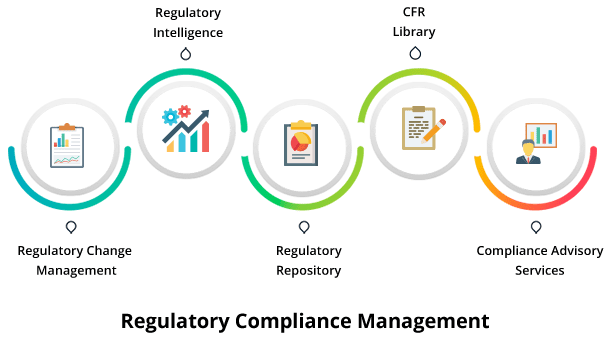Managing regulatory compliance through manual processes is prone to errors and can be highly time-consuming. Compliance management software automates these processes to eliminate human error and ensure tasks are completed on time.
Look for features like centralized data management, customizable workflows, and automated alerts to determine whether the software aligns with your business needs. You should also consider the pricing model and if it offers free trials.
Automated Reporting
From product registration and submissions to publication and archiving, regulatory compliance can be incredibly time-consuming. Manually compiling reports can be tedious, but more importantly, it’s prone to errors and inaccuracies that can lead stakeholders to distrust the data they’re using for critical decision-making. Automated reporting eliminates the need for a team to manually collect and collate marketing information to produce accurate, up-to-date reports on a scheduled basis.
With automation, the reports you generate can be ready to be reviewed and distributed to the relevant parties before your employees even have their coffee brewed in the morning. This gives your business a valuable opportunity to take action before competitors can react to market events and respond accordingly.
It’s also worth mentioning that automated reporting is far more reliable than manual, human-based methods of gathering and delivering marketing data. Humans are prone to error, which can be costly in terms of lost time and money, while software is designed to be as accurate as possible.
Regulatory compliance management software gives businesses a real-time view of their compliance requirements, including customizable reports and dashboards. It can help organizations identify and manage risks, mitigate compliance breaches, and reduce the likelihood of fines or legal consequences. This is made possible by centralized policy management, document & risk management, and automated updates.
Compliance Dashboards
A high-quality compliance dashboard consolidates data from various sources into one centralized hub. This makes it easy for stakeholders to monitor compliance adherence and address issues as they arise.
The best dashboards leverage advanced visual analytics to transform raw figures into easy-to-understand insights. You can clearly understand how your company is performing by applying a range of data visualization methods, such as heat maps highlighting regional compliance variations or time-series charts illustrating quarterly trends.
You can also track the progress of specific projects through your dashboard. This enables you to see which tasks have been completed, which are outstanding, and how lengthy issues take to resolve. Ideally, your dashboard should display separate metrics for different topics so you can discover if some compliance-related problems take much longer to resolve than others.
The best dashboards are agile and adjust in real-time to reflect evolving regulatory standards. This enables you to maintain consistent transparency across your business, fostering a culture of compliance that will help your team stay safe and prevent costly fines. For example, some use a dashboard that promotes equality and encourages diversity, allowing the company to comply with GDPR requirements that require transparency around gender and other aspects of employee representation.
Integrations
A sound compliance management system will be able to connect with existing tools in the organization, including other software and even hardware. This helps streamline workflows and makes it easier to automate tasks that would otherwise be difficult. This can also help reduce manual processes, leading to errors and increased costs. Many of these tools can also offer archiving and reporting features, allowing you to keep an audit trail for your purposes and external regulators.
A key feature is the ability to easily track the progress of all tasks related to regulatory compliance, as this can help businesses meet deadlines. This capability can also be helpful when preparing for audits or investigations, as it can give authorities access to all necessary documentation.
Choosing the right compliance tool can be tricky, but taking the time to assess current processes, set clear objectives, and evaluate different software options is essential. It’s also important to plan for the implementation process and involve key stakeholders from start to finish. Stakeholder engagement can alleviate resistance to change and ensure that the new software is a success.
A robust regulatory compliance management solution will offer centralized data management, automated workflow, and real-time updates to help companies save time, money, and resources. It will also help to improve business efficiency, boost revenue, and build trust with customers and partners.
Customization
There are many factors to consider when choosing a compliance software tool. Ultimately, the right solution will make all the difference in how smoothly and efficiently your business operates. Choose a system that offers a comprehensive approach to your business needs and is supported by expert customer support.
The best compliance management systems have built-in frameworks that allow you to customize your compliance requirements and meet them quickly. These tools also offer live tracking and notifications to notify you of changes in your compliance status. These tools are easy to learn and simple to use for anyone. They will save you time and money while improving your team’s efficiency and reducing errors.
Regulatory compliance is a complex process that requires a lot of work. A single mistake can put your business at risk of fines, reputation damage, and operational disruptions. Investing in a compliance management tool that will help you automate your processes, improve data security, and ensure real-time regulatory updates is essential.
To make the most of your new automation, start by assessing your current compliance processes and identifying areas for improvement. Set clear objectives and involve all stakeholders in the process. Organize extensive training programs and provide ongoing support to ease the transition. Review the performance of your compliance tool regularly and stay up-to-date on upgrades and maintenance.



